Philodendrons normally fade away after 15-20 years as they grow old. But yellow leaves in young Philodendron may be an outturn of inattentive care.
Thus, if you are early in gardening and got hit with the Philodendron yellow leaves, keep this article in mind!
Table of Contents Show
Is It Normal for Philodendron Leaves to Turn Yellow?
The sudden discoloration of Philodendrons leaves can be normal if only 1-2 leaves near the bottom appear yellow, indicating an aging plant.
Normally, old leaves become brittle and crunchy, a yellow-to-brown shade once matured.
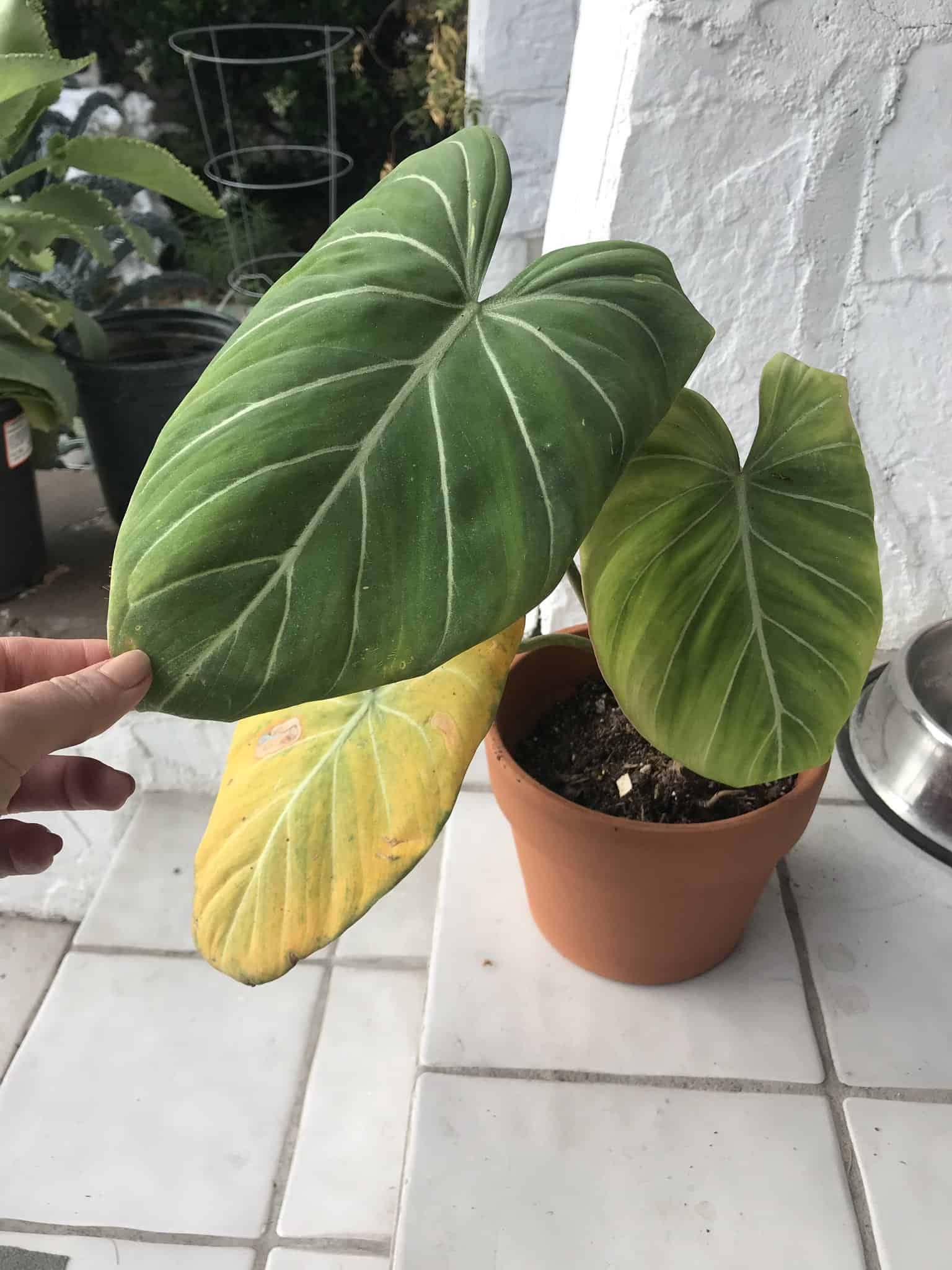
However, if the discoloration spreads to more than two leaves, something is happening to the Philodendron.
You can even predict mishaps in the Philodendron by looking at the color of the new growth.
If the twigs have green leaves, every requirement is fulfilled accordingly.
But if your Philodendron’s new leaves are yellow, be ready to understand the cause since it is abnormal.
Why is My Philodendron Leaves Turning Yellow?
If the cultural requirements are under or overstated, varieties, including Philodendron birkin and Philodendron adansonii leaves yellow as a revolt.
Similar is the case with Split Leaf Philodendron and Philodendron Selloum yellow leaves.
So, let’s look at some causes of Philodendron leaves turning yellow and curling with the immediate recovery steps of the issues.
1. Improper Watering
If the watering need is tardy, it can become the most common cause of Philodendron’s yellow leaves.
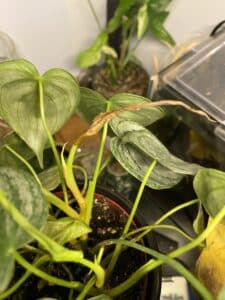
Continuously watering Philodendrons in fall and winter can cause overwatering problems, chipping their roots directly due to less oxygen.
This disturbs the connection between the roots and shoots of the plant, taking away its ability to uptake water from the soil.
But, inconsistent watering during heat spells can dry up the soil, harming the roots and leaves due to dehydration.
So, both conditions will cause Philodendron leaves to turn yellow and curling with other side effects, like browning.
Proper Watering & Revival Steps
- Try moving the plant to a sunny location to dry the excess moisture in the soil.
- Uproot the plant to check for rotten roots and discard any using sterilized pruners.
- Repot the plant in fresh potting mix, but amend the soil with more drainage components this time.
- Use terracotta pots with bottom drainage holes to discourage stagnant water conditions.
- Check the top 1-2 inches of soil for dryness between watering sessions in fall and winter.
- Toss the standing water from the pot’s plate after watering the plant during growing seasons.
- Try a bottom-up approach to moisturize the soil from below to reduce any watering issues.
2. Imbalaced Lighting
Owing to their tropical habit, Philodendrons prefer dappled sunlight as they grow below the canopy of other tall neighboring trees.
Hence, they get filtered sunlight throughout the day, which is crucial for preparing food in their leaves.
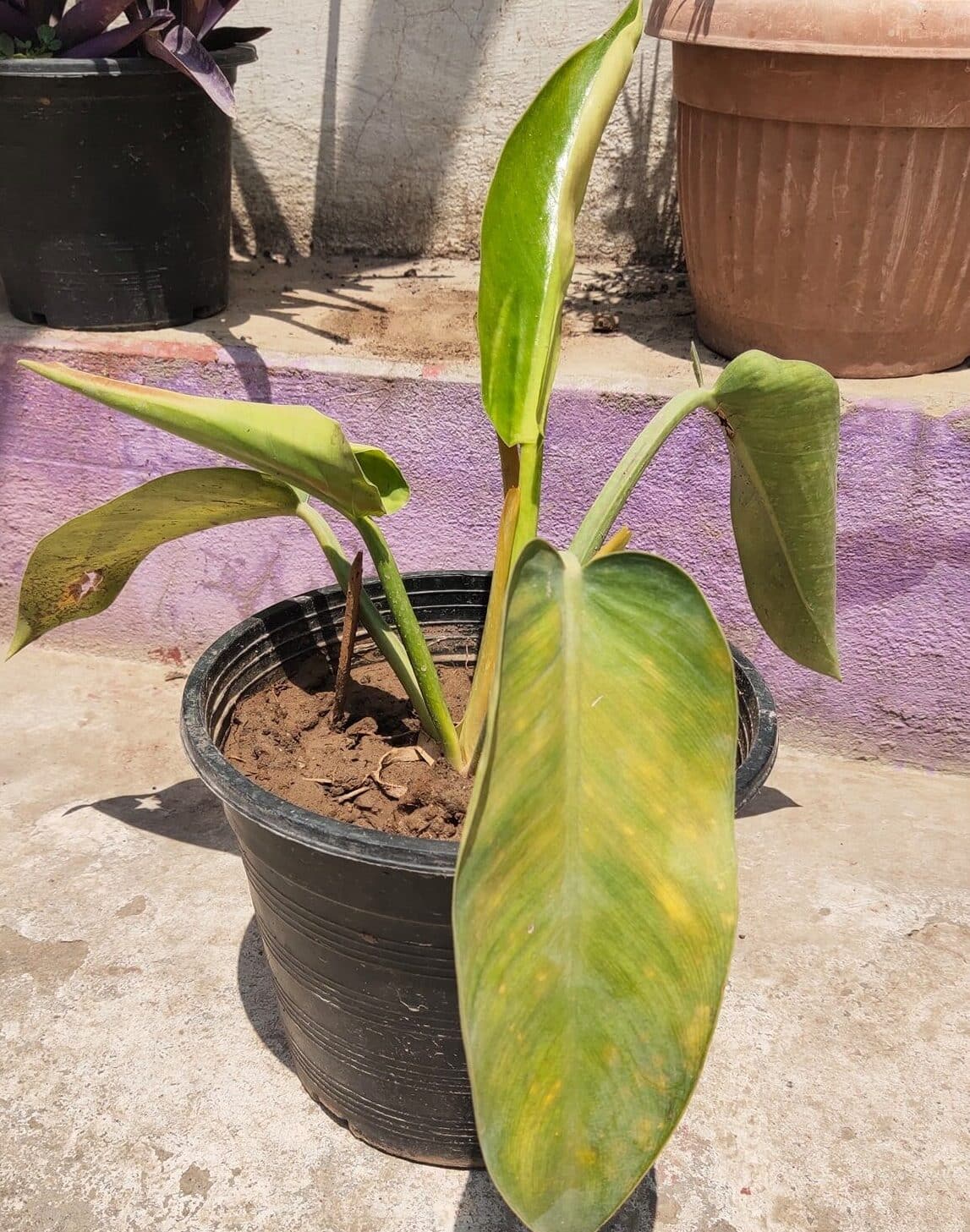
If the plant is not getting enough light, the leaves cannot prepare the food and exhibit Philodendron leaves yellowing and start drooping,
Likewise, intense sunlight will spike the surrounding temperature and drain all the moisture from the plant parts, making the leaves pale.
However, some common signs of light-saturated and light-deficit Philodendrons are browning foliage, rolled-up leaves, and leaf drops.
Proper Lighting & Revival Steps
- Situate the plant to an east-facing window or 3-5 feet from a south-facing window.
- Keep curtains over strong light-receiving windows or hang UV protection films to filter the intense sunlight.
- Remove yellow, browning, or crispy foliage to subside the light stress.
- Rotate your Philodendron occasionally so that the leaves receive even sunlight.
- Dust off the leaves for them to prepare their food efficiently.
3. Fertilization Problem
Philodendrons are not vigorous feeders, but they require a minimum feeding to maintain the shiny look of the leaves.
Since Philodendrons go dormant in fall and winter, excess fertilizer during such periods will chemically burn the leaves and roots.
Moreover, yellowing during overfertilization occurs due to the oversaturation of salts in the root crowns, ceasing the uptake of nutrients.
However, less fertilizer application (especially nitrogen) will make the plant nutrient deficient, contributing to chlorosis (yellow leaves).
To be sure, check the lower leaves of Philodendrons, as they are the first to turn yellow in a unique pattern.
Proper Fertilizer & Revival Steps
- To discard the accumulated salts, flush the soil monthly with distillate water 4-5 times.
- If overfertilization symptoms persist, repot the plant in fresh soil with a semi-concentrate liquid fertilizer dose.
- Uproot the plant to snip the chemically injured black or brown roots and leaves.
- Water the plant before fertilizing so the nutrients percolate to greater soil depth around the roots.
4. Temperature & Humidity Stress
Stress inducers like fluctuating temperature and dry days lead to curling, wrinkling, yellowing, and finally, wilting of the Philodendron leaves.
Meanwhile, temperatures below 60ºF or over 90ºF cause progressive yellowing and browning.
Pro Tip: Intense sunlight for a prolonged duration can increase the surrounding temperatures, while less sunlight drastically reduces it.
Proper Temperature, Humidity, and Revival Steps
- Mist the plant leaves biweekly for humidity in spring and summer.
- Invest in a humidity tray for the plant to offer the required surrounding moisture.
- Relocate the plant away from drafty north-facing windows, air conditioning vents, and heaters.
- Use frost blankets to protect your plant from cold during winter nights.
5. Improper Soil
Philodendrons prefer light, well-draining soil over heavy soil, allowing the water to drain from the holes.
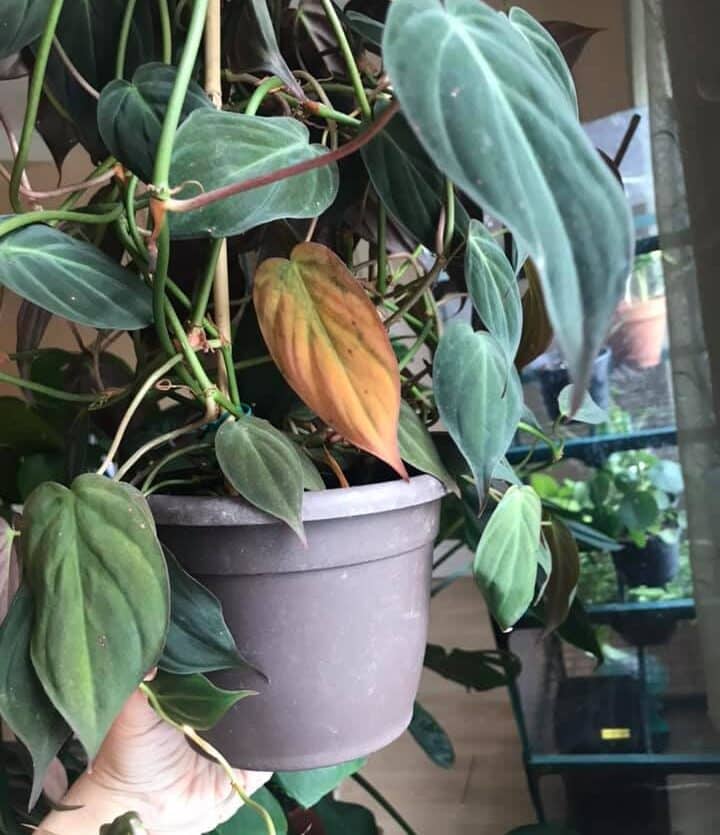
Usually, the soil becomes hard over time, and the bigger sand particle drains away with water.
The condition makes the root suffer from compactness and prohibits the entry of oxygen, promoting a water-logged state and root rot.
So, the leaves curl and turn yellow due to a disconnection between the roots and leaves.
Proper Soil & Revival Steps
- Keep a pebble layer at the planter’s base before repotting to offer an airy potting environment.
- Amend the potting soil with organic perlite or sand to increase the porosity and drainage.
- While switching the soil, offer a 1-2 inches wider and deeper planter every 1.5-3 years in early spring or summer for spacious legroom.
6. Pests & Diseases
Many bugs and pathogens are constantly prowling to attack your Philodendron leaves.
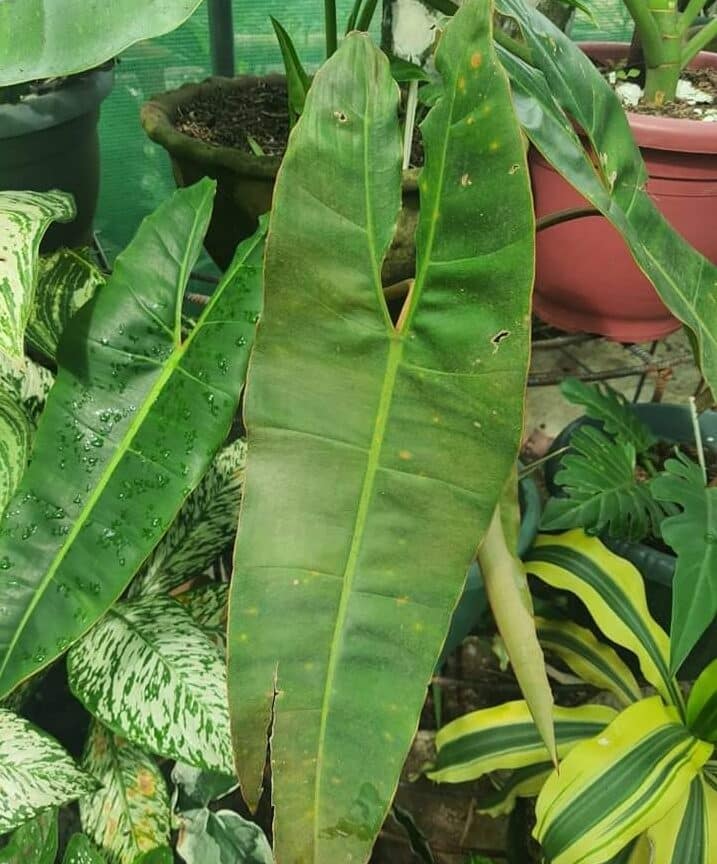
When invasion exceeds, the sap starts to dry, and leaves turn brittle with yellow patches and cuts on leaves.
These small yellow spots on Philodendron leaves increase into patches making it unaesthetic.
Similarly, pathogens land on the leaf and proliferate, forming yellowish-brown spots that spread rapidly throughout the plant.
Immediate Revival Steps
- Cut off the affected leaves and burn the remaining debris to prevent further damage.
- Isolate the diseased plant from healthy plants to prevent the spread of the infestation.
- Use Q-tips dipped in neem oil to dab the pests or rub sterilized cotton swabs over the diseased parts.
- Scrape off the pests using a sterilized knife or use a strong blast of water to remove the pathogenic spores.
- Keep yellow sticky traps around your Philodendrons to capture hovering pests.
- If your plant shows persistent signs of disease, use copper-rich fungicides for effective control.
Should I Remove the Yellow Leaves off the Philodendron?
Snipping off the yellow leaves helps to shift the entire focus of the Philodendron into healthy green leaves instead of repairing them.
So better trim the yellow leaves off. Follow the steps for successful pruning of yellow leaves of Philodendron.
- Check for the leaves that appear yellow or are wilting.
- Initially, try to tug off the leaves from the point of attachment, as some leaves might fall off naturally.
- Cut the leaves down to the soil line, close to the stem.
- Prune only 1/3rd portion of the plant at once to relieve the stress.
- Compost or ignite the leaves or any parts to reduce the infection spread.
From Editorial Team
Timely Feed!
Philodendrons love pampering to flourish their monstrous coppery red, green, or purplish leaves.
So you need to be more careful about the feeding habits of Philodendrons during its active growth period.
